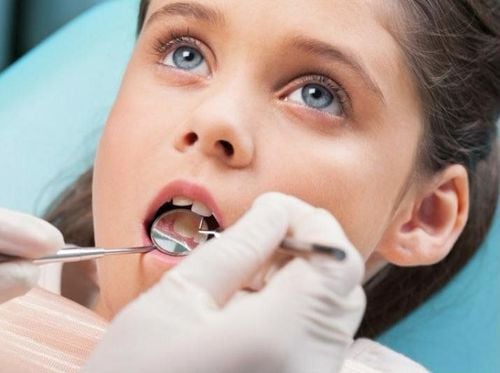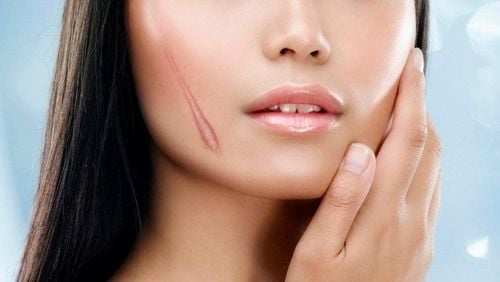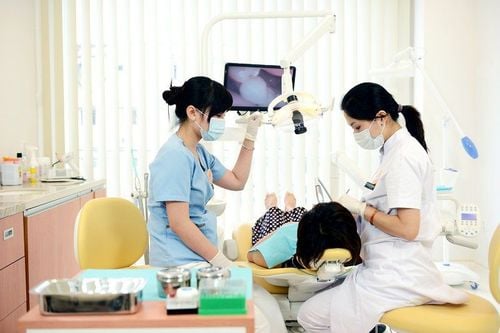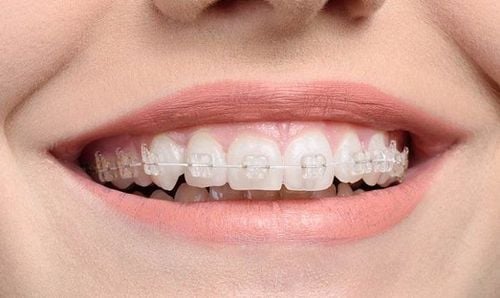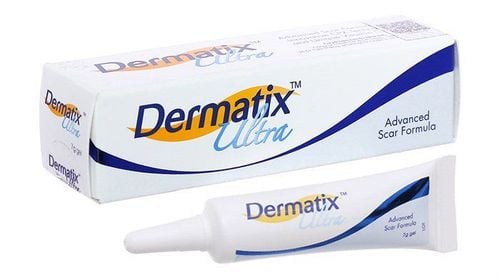This is an automatically translated article.
Keloids and hypertrophic scars cause unsightly beauty, especially in young children, scars can also cause uncomfortable itching, pain and shrinkage on the skin, restricting children's movement. When you have keloids or hypertrophic scars, it is necessary to evaluate what stage the scar is in to give appropriate treatment.1. What are keloids and hypertrophic scars?
Keloid: A keloid is a scar that forms after an injury about 6 months, and during the healing process the scar grows larger than the original wound, does not regress on its own due to overproduction and accumulation of collagen. Hypertrophic scars: Hypertrophic scars are scars that appear within 6 months of the injury and usually do not develop beyond the wound. Although it is also caused by collagen overgrowth, hypertrophic scars can self-regress over time. Causes of keloid and hypertrophic scars can be:Severe and deep burns (from 2nd degree and above); Surgery, invasive skin procedures; Accident; Skin infection.
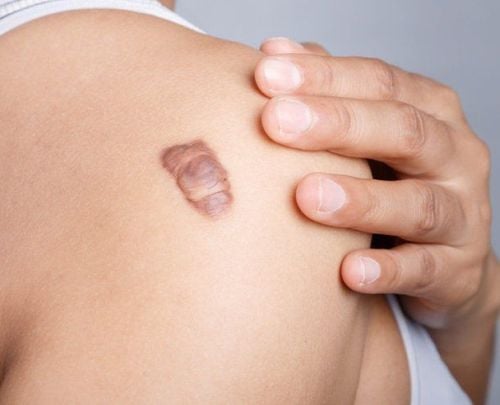
ẹo lồi là sẹo hình thành sau khi bị thương khoảng 6 tháng và trong quá trình lành vết thương sẹo phát triển lớn hơn vết thương ban đầu
2. Treatment of keloids and hypertrophic scars
Keloids and hypertrophic scars cause unsightly beauty, especially in young children, scars can also cause uncomfortable itching, pain and shrinkage on the skin, restricting children's movement.When you have keloids or hypertrophic scars, it is necessary to evaluate what stage the scar is in to give appropriate treatment. It can be divided into 2 stages for evaluation, which is the stage of scarring that begins to form when the wound has just healed) and the stage of advanced scarring.
2.1 Early stages of keloids and hypertrophic scars Apply scar prevention cream; Bandage with silicone patch; Apply physical therapy to massage the scarred area and use a compression bandage. 2.2 Advanced stages of keloids and hypertrophic scars Usually, keloids and hypertrophic scars are treated when the scars are already in an advanced stage. Some methods used to treat scars at this stage include:
Corticosteroid injections: Corticosteroid injections have the effect of softening the scar tissue and flattening the scar surface, indicated in cases of keloid or hypertrophic scars. active causes itching, pain, and redness. Corticosteroid injection inhibits fibroblast proliferation and is often combined with cryosurgery or scar removal surgery. Despite the high success rate of treatment, corticosteroid injections can cause complications such as skin pigmentation reduction, skin atrophy. In addition to corticosteroids, it is possible to inject Interferon, Bleomycin.
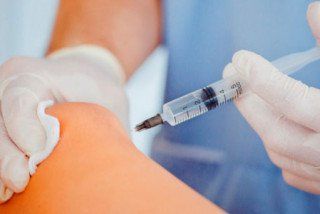
Tiêm corticoid có tác dụng làm mềm tổ chức sẹo và phẳng bề mặt sẹo, được chỉ định trong những trường hợp sẹo lồi hoặc sẹo phì đại đang hoạt động gây ngứa, đau và đỏ
3. Prevention of keloids and hypertrophic scars
Keloids and hypertrophic scars can be prevented from forming by measures such as:When injured, care should be taken to take care of the wound so that it heals quickly, leaving no scars. When the wound begins to heal, it is also the time when the scar forms (usually about 2 - 8 weeks after the injury), massage to prevent scars, and apply scar compression under the guidance of a specialist. When scar formation causes itching, it is necessary to avoid scratching, scratching or irritating the skin with keloids, hypertrophic scars, and avoiding wearing clothes that are too tight to affect the scar. Limit some foods that cause allergies, itching and pay attention to supplementing with adequate nutrients to strengthen the body's resistance during wound treatment.

Hạn chế một số loại thực phẩm gây dị ứng, ngứa
Please dial HOTLINE for more information or register for an appointment HERE. Download MyVinmec app to make appointments faster and to manage your bookings easily.





